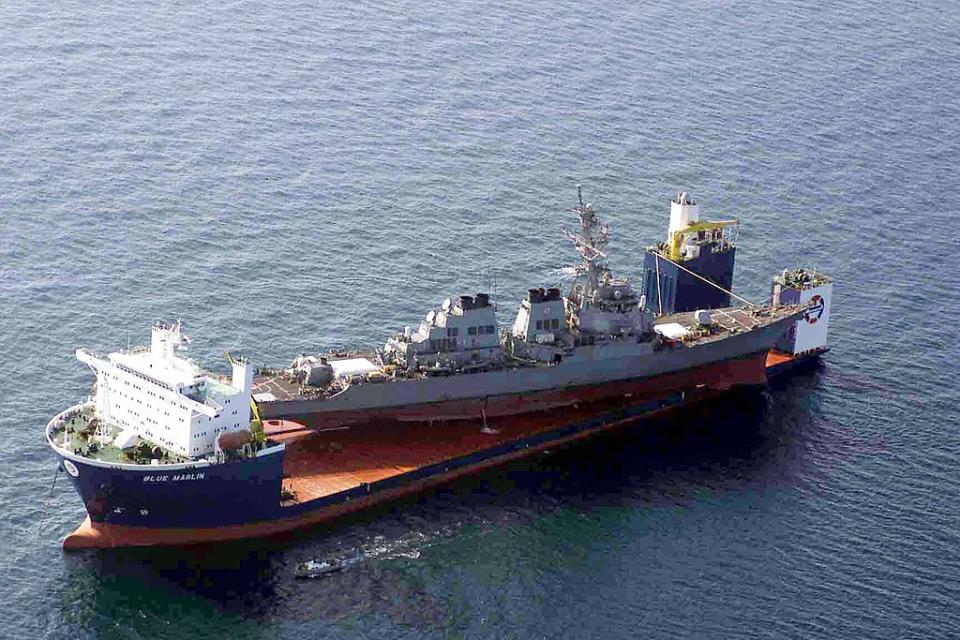New Photos the Grievous Damage Done to the USS Fitzgerald

New Navy photos obtained by the U.S. Naval Institute News show previously unseen damage to the hull and superstructure of the destroyer USS Fitzgerald. The guided missile destroyer collided with the container ship ACX Crystal on the morning of June 17th, 2016.

The photos, released by the U.S. Navy's Seventh Fleet based in Yokosuka, Japan show the Fitzgerald in drydock with sailors inspecting the damage. A large hole in the hull, not seen when the ship was in the water, is shown patched with metal plating and large steel bars securing the plates. In the moments after the accident, the hole flooded the ship, causing the destroyer to list towards the bow and starboard even while damage control pumps were furiously pumping water back out of the ship.
According to a previous report, the hole was so big it couldn't be patched with existing hull patch kits and crews "had to cobble together enough material to plug the hole in the side of the ship before it could be safely transferred to the dry dock in Yokosuka."
In addition to the hole punched in the hull, the ship experienced extensive damage to its superstructure, as the Crystal struck a glancing blow against the warship. The AN/SPY-1D(v) radar, part of the Aegis Combat System, was also impacted, with the starboard radar arrays severely damaged.
Finally and perhaps most ominously, investigators have concluded the Fitzgerald's hull was twisted in the collision. Twisting, or torsional stress along the length of the hull, is a more difficult fix and could affect the long term viability of the hull.
The U.S. Navy is currently evaluating the ship to determine if it can be repaired in Japan or must be returned to a U.S. shipyard. In 2000, sister ship USS Cole, damaged in the Yemen port of Aden by an Al Qaeda suicide attack, was ferried back to the Northrop Grumman Ship Systems shipyard at Pascagoula, Mississippi for a two year repair process. The Cole was ferried back to the USA on the M/V Blue Marlin, a picture of which is below:

See more pictures here at the U.S. Naval Institute News article.
You Might Also Like

